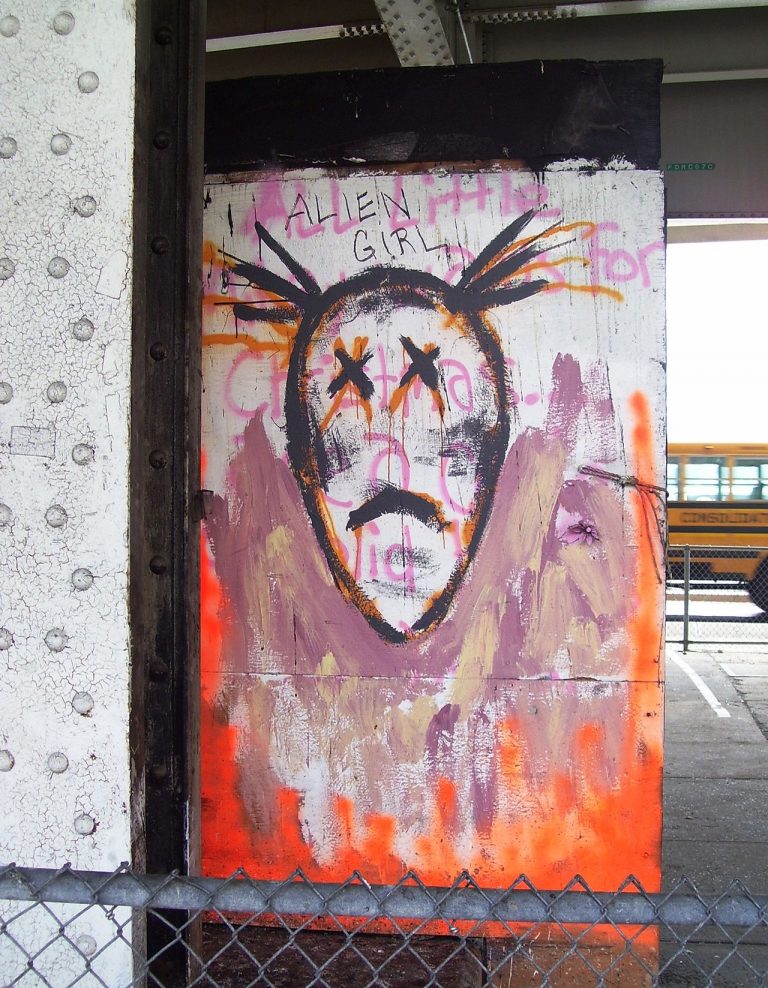1940 - nowadays
Street art

description
Street art
Street art is an art movement that emerged in the middle of the twentieth century as an art phenomenon that covered not the canvases and gallery walls but everything outside: the walls of residential buildings, fences, tree trunks, bridge piers, industrial factories and abandoned premises. It differs from vandalism and hooliganism by the motivation for improving the aesthetic atmosphere of the city. Also, it cannot be an advertisement.
The oldest graffiti was discovered by restorers on the walls of the Coliseum; some of them looked like “bodily bottom”.
Street art exists in the form of an abandoned note, book or postcard, chalk inscriptions, graffiti (spray art), 3D graffiti, poster, stencil, street installation, partisan sculpture, partisan knitting (yarnbombing) and tree decorations, stickers, mural, street performance (“action”, “monstration”) and flash mob.
Each author has his stylized logo – a sign or signature.
Key ideas:
– Although Street art has the characteristic features of anonymity, unauthorizedness and undergroundness, this art belongs to everyone. Everyone is a spectator; each spectator is a participant.
– This movement seeks to meet modern trends, has aesthetics and semantic load and makes gallery paintings on canvas from gray walls, turning dangerous and poor neighborhoods into worthy and prestigious ones and involving local and tourists in a dialogue.
– The diverse plot of the compositions tells us that the idea dominates the form – instead of the mediocre message “I am,” there is the confident “I think so”.
description
Basquiat was famous as a graffiti artist and as a very successful Neo-expressionist. He is the author of a series of crazy paintings.From childhood, the painter spoke English, French and Spanish. Young Basquiat read Symbolist poems, as well as myths and historical books. He became interested in arts at an early age and also dreamt of becoming a cartoonist.
1960 - 1988
